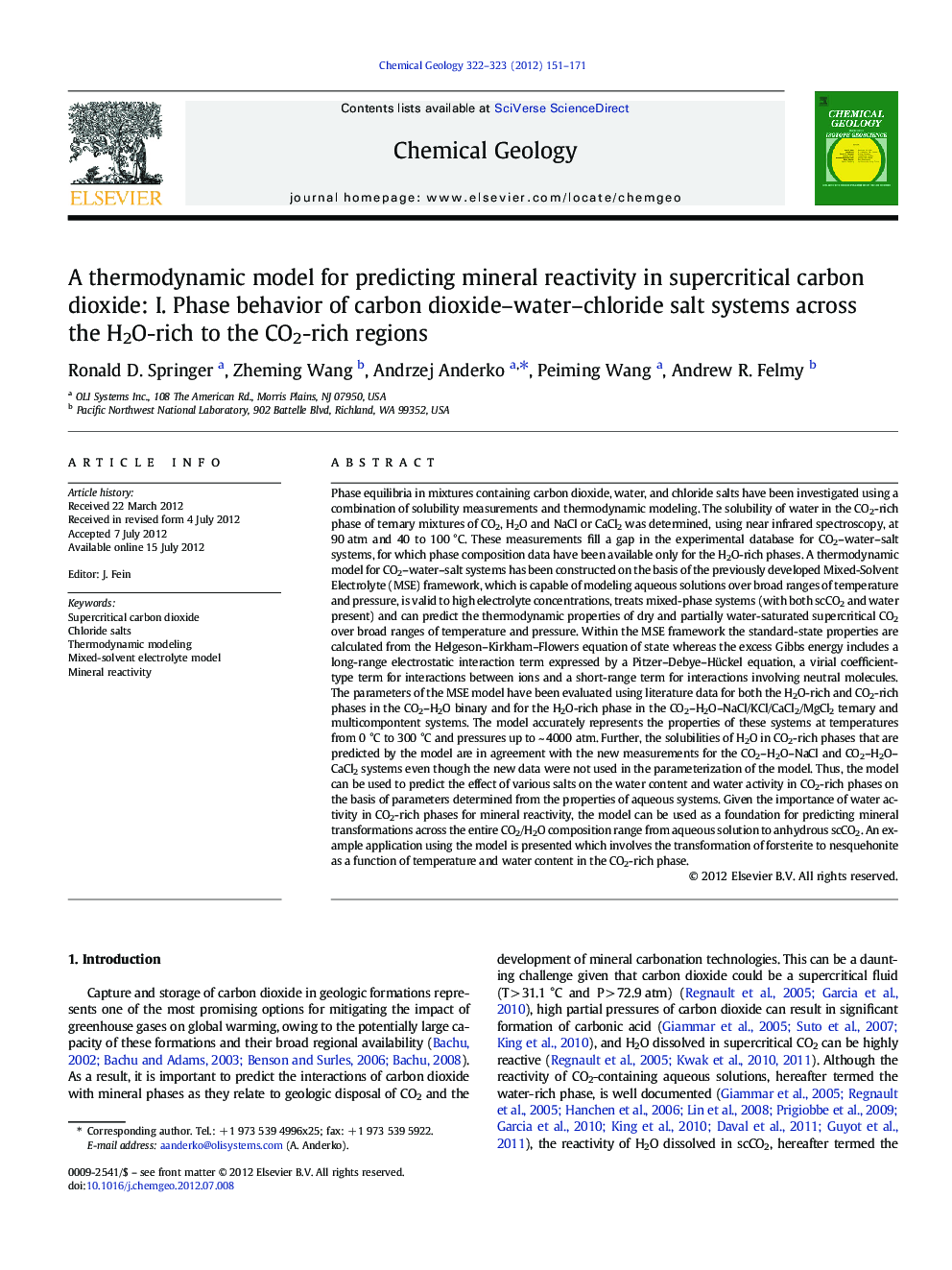| کد مقاله | کد نشریه | سال انتشار | مقاله انگلیسی | نسخه تمام متن |
|---|---|---|---|---|
| 4699335 | 1637640 | 2012 | 21 صفحه PDF | دانلود رایگان |

Phase equilibria in mixtures containing carbon dioxide, water, and chloride salts have been investigated using a combination of solubility measurements and thermodynamic modeling. The solubility of water in the CO2-rich phase of ternary mixtures of CO2, H2O and NaCl or CaCl2 was determined, using near infrared spectroscopy, at 90 atm and 40 to 100 °C. These measurements fill a gap in the experimental database for CO2–water–salt systems, for which phase composition data have been available only for the H2O-rich phases. A thermodynamic model for CO2–water–salt systems has been constructed on the basis of the previously developed Mixed-Solvent Electrolyte (MSE) framework, which is capable of modeling aqueous solutions over broad ranges of temperature and pressure, is valid to high electrolyte concentrations, treats mixed-phase systems (with both scCO2 and water present) and can predict the thermodynamic properties of dry and partially water-saturated supercritical CO2 over broad ranges of temperature and pressure. Within the MSE framework the standard-state properties are calculated from the Helgeson–Kirkham–Flowers equation of state whereas the excess Gibbs energy includes a long-range electrostatic interaction term expressed by a Pitzer–Debye–Hückel equation, a virial coefficient-type term for interactions between ions and a short-range term for interactions involving neutral molecules. The parameters of the MSE model have been evaluated using literature data for both the H2O-rich and CO2-rich phases in the CO2–H2O binary and for the H2O-rich phase in the CO2–H2O–NaCl/KCl/CaCl2/MgCl2 ternary and multicompontent systems. The model accurately represents the properties of these systems at temperatures from 0 °C to 300 °C and pressures up to ~ 4000 atm. Further, the solubilities of H2O in CO2-rich phases that are predicted by the model are in agreement with the new measurements for the CO2–H2O–NaCl and CO2–H2O–CaCl2 systems even though the new data were not used in the parameterization of the model. Thus, the model can be used to predict the effect of various salts on the water content and water activity in CO2-rich phases on the basis of parameters determined from the properties of aqueous systems. Given the importance of water activity in CO2-rich phases for mineral reactivity, the model can be used as a foundation for predicting mineral transformations across the entire CO2/H2O composition range from aqueous solution to anhydrous scCO2. An example application using the model is presented which involves the transformation of forsterite to nesquehonite as a function of temperature and water content in the CO2-rich phase.
► Solubility of H2O in CO2-rich phase in the presence of NaCl or CaCl2 was determined.
► Mixed-Solvent Electrolyte (MSE) model was applied to CO2–H2O–salt system.
► The model correlates the properties of H2O-rich phase in CO2–H2O–salt systems.
► The model predicts the water solubility in CO2-rich phase.
► The model can predict mineral transformations across the CO2/H2O composition range.
Journal: Chemical Geology - Volumes 322–323, 5 September 2012, Pages 151–171